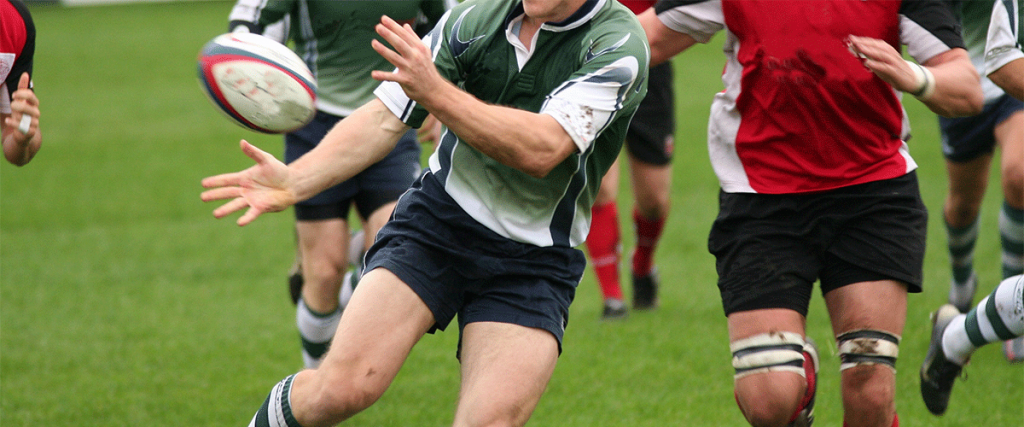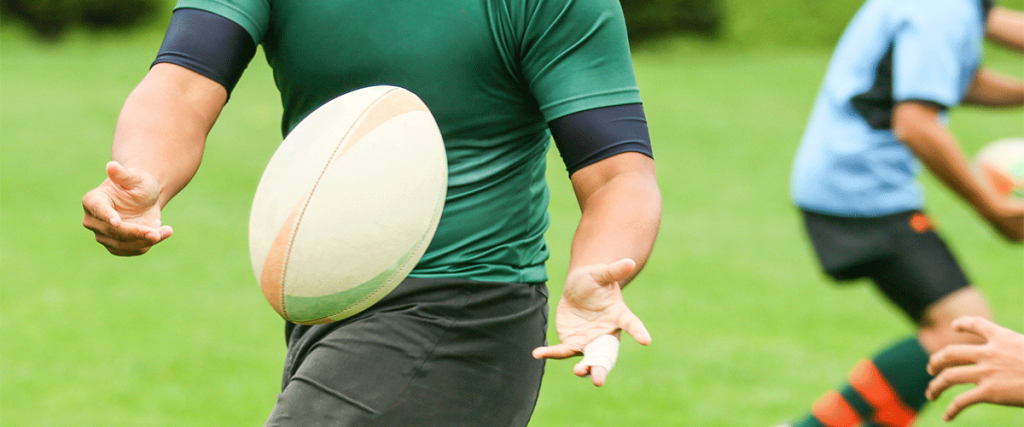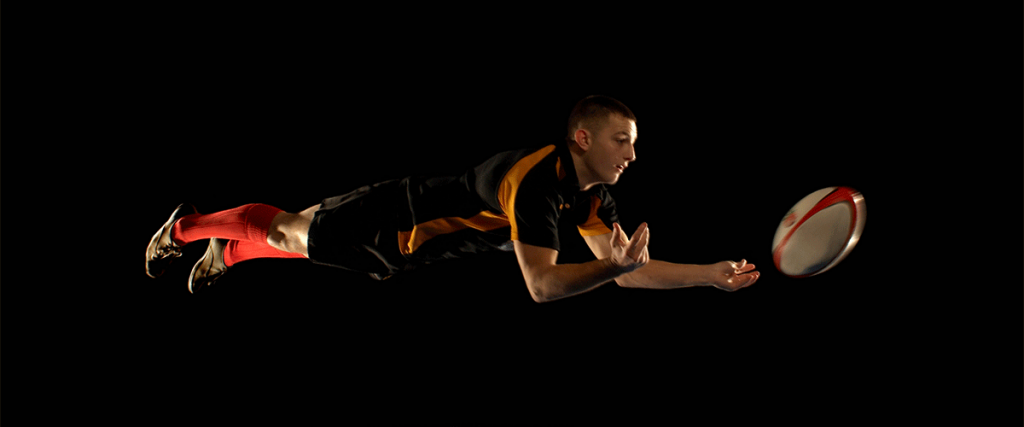How to pass a rugby ball

The ability to successfully pass the rugby ball, using a range of passes, is a core skill that has to be executed well.
As a fundamental rugby skill, passing is mastered through repetition of the proper passing techniques.
It is said that to be considered excellent at something, you must practice it for ten thousand hours. Whilst that may be the case with passing a rugby ball, practicing an incorrect technique is a disbenefit that becomes hard to undo.
Rugby Passing Techniques
To simplify the coaching of passing a rugby ball, we break the skill of passing into four basic variations:
- Basic pass
- Spin pass
- Pop pass
- Scrumhalf / half back pass
Rugby Passing Tips
Here are a few general passing tips, that are often lacking at all levels of the game, not just at a junior level. Many of the following passing tips focus on the receiver as well as the passer, so best to view them as general catch and pass tips.
Teach these to your junior rugby players from the outset, so they can master them over time:
- the receiver needs to give the passer a target by putting their hands at chest level
- the passer should aim the pass at the receivers hands (chest level), slightly ahead of the receiver
- the pass should not go forward
- the receiver should communicate to the passer that he is in a (good) position to receive a pass
- the distance between the receiver and the passer should be based on how far the ball carrier can accurately pass the ball – accuracy is the most important factor, not distance
- the ball must be gripped firmly by the passer – a wider grip enables better power and control
- learn to pass both ways
- learn to pass the same way, off both legs, under pressure
- teach players to pass softly and with pace, depending on the situation and type of pass
- all players now need to be able to make a halfback / scrumhalf type of pass
- a successful pass requires balanced legs and hips, the hips should be opened towards the receiver enabling the passer to push his hands through to finish at the target (see video below)
Over the next few weeks, we will publish further coaching advice on running lines, which is a key complimentary skill to catch and pass.
Catch and Pass Video
We recommend you watch the following short video, hosted by Dave Rennie. It provides a very good overview of the core skills required to execute excellent catch and pass.
Four core passing types
The Basic Passing Technique
The basic pass should be coached first. We recommend you master the simple pass before your players learn the more advanced passing options, such as the torpedo pass.
The basic pass is most often used with a flick of the hands to pass the ball. It is probably the most used type of pass with Rugby League (see video below).
Start by holding the rugby ball in two hands with your fingers spread across the seams, with your chest facing forward. Keep your elbows slightly bent at the start of the pass, looking at the receiver to help you deliver an accurate pass. Swing your hands through an arc, keeping your elbows close to your body.
Release the ball with a flick of the wrists and fingers. Follow through with your fingers pointing to the target – chest high in front of the receiver.
Watch the following video for a visual guide on how to make a basic pass.
The Spin, Spiral or Torpedo Pass Technique

The spin pass, also known as the spiral or torpedo pass, is the most used pass in rugby, especially by backline players. It is also the most difficult type of pass to master. Which is why we recommend you teach it only once players have mastered the basic pass.
The spin / spiral / torpedo pass is used to achieve the greatest accuracy over a long distance and is thus a very important skill to master with sevens rugby.
This pass is often used to skip attacking players or to take advantage of an overlap by getting the ball wide, quickly.
The spin pass must be made at chest height to obtain continuity. The receiving player can assist the passer by holding their hands out from their chest as a “target”, with the fingers outstretched or in a diamond shape.
As the ball is released, the fingers on the outside hand should slide over the ball toward the body in an anticlockwise direction, while the fingers on the hand beneath, release and guide the ball. The passing action should finish with both arms punching towards the target.
Coaching tip
Ultimately, the goal when passing is to get the ball into a team mates hands, as accurately as possible, using whichever passing technique is easiest to execute. As such, start by teaching novice players the “basic pass” as it’s a lot easier to get right.
The Pop Pass Technique

The pop pass is a short pass often used when you want to pass the rugby ball to a team mate who is running in close support. It is a pass that hangs for a moment in the air. It is sometimes used as a ‘switch’ (scissor movement) to change the direction of play.
Rather than spinning the ball, the pop pass is performed using only the forearms and a swift punch or flick of the wrists and fingers to project the ball towards the target.
The pop pass can help inject players into small gaps, meaning the key to a successful pop pass is hard running and clear communication among players.
The Scrumhalf / Halfback Passing Technique

The scrumhalf (AKA halfback in New Zealand) most often passes the ball from set piece plays such as at lineout and scrum. However, the fast paced nature of the modern game requires all players to be able to make a long, spiral pass from the base of a ruck.
The Dive Pass
The dive pass is seldom used these days, as it the scrumhalf ends up on his / her stomach, which slows him down from getting to the next play.
The main difference between the normal scrumhalf pass and the dive pass is the dive pass involves the player diving while passing the ball to his teammate.
The scrumhalf passing technique (see video below):
